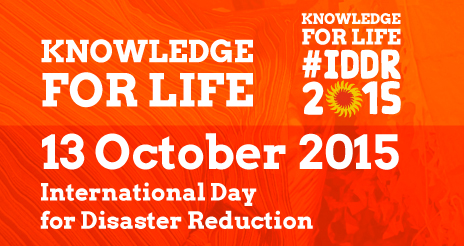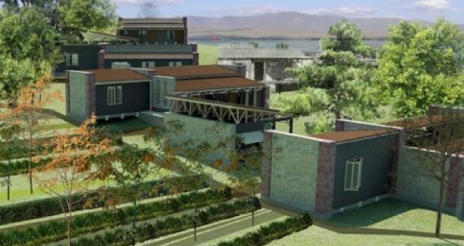- Our Mandate
- Mission and Objectives
- UNDRR in the UN
- Work Programme & Annual Reports
- Results Based System
- Work Partnerships
- Headquarters - Geneva
- SG-UN representatives for DRR
- Regional Office – The Americas and the Caribbean
- Head of the Regional Office – The Americas and the Caribbean
- What is Disaster Risk Reduction?
- What is the International Strategy?
- History of UNDRR
Cuban students win International Architecture Award
Source: Cuba Debate.
Edit: UNDRR – The Americas
SANTIAGO DE CUBA, Cuba, 13 August 2015— Put in place by Architecture students from the Central University Marta Abreu de las Villas, the project Rescate de Cayo Gramma, in Santiago de Cuba, received one of the two awards given throughout the VII International Competition of Architecture for Disaster Risk Reduction, with its headquarters in London, United Kingdom.
According to the “Global Estimate 2015”* Cuba and Haiti have been the two countries with the higher index of displacement in the past seven years. Hurricane Sandy (October 2012) is among the most harmful disasters to hit Cuba, it displaced more than 340,000 people from its 11 million inhabitants and caused considerable damages in its infrastructure that still hold a high reconstruction cost.
After the impact of Sandy, the students Ana Lourdes Barrera Cano, Royer Leno Medina, Elisa Medina Toboso y Niuris Martín Rosabal, from the provinces of Cienfuegos and Villa Clara, traveled to Cayo Granma where they elaborated a proposal for the reconstruction of the town, in which only four out of the two hundred homes were left standing after the disaster. “We made a previous study, observed the results, and thus based our work on our social, economical and political analysis” explained Elisa Medina Toboso, from the winning team.
The proposal, elaborated under the supervision of professor Andrés Olivera Ranero, stood out due to its viability when using the cooperative housing appeared spontaneously in Cayo Granma after the passage of the meteor.
The jury highlighted the great analysis of the socio-spatial dimension, as well as the sound and complete description of the organizational and institutional structure within an excellent reflection on the urban scale of design. “This was the most complete project” declared Dr. Camilo Boano, member of the jury.
Amongst the evaluation of elements such as socioeconomics and transportation, the proposal took into account the serious damage in built up areas, high rates of alcoholism, low education levels, unemployment and lack of motivation to work, were some of the elements highlighted by the socio-economic assessment, not to mention the limited means of transportation (just a boat for the people moving into the city).
Therefore, in order to revive the settlement, a four-step strategy was designed to ensure safe housing for the family, promote self-cultivation, recover the sawmill at the heart of the economy —traditionally used for building boats— and enhance urban development.
Fifteen projects participated in the contest with representatives of prestigious universities worldwide, including: the University of Montreal (Canada) and the School of Architecture of Madrid (Spain). This is the second time that architecture students from the Central University are bestowed such recognition.
* The “Global Estimate of 2015” is edited by the Council of Refugees in Norway and the Internal Displacement Monitoring
Related Links:
Original article in Cuba Debate
Winning students TV news story
Campaign of Sensibilization Urban Risk in Cuba
Follow the UNDRR news online:
 International Day for Disaster Reduction #DIRD 2015 Knowledge for Life
International Day for Disaster Reduction #DIRD 2015 Knowledge for Life
More information

 Proyect “Rescate de Caño Grama” Photo Cred: Courtesy of Cuba Debate.
Proyect “Rescate de Caño Grama” Photo Cred: Courtesy of Cuba Debate.